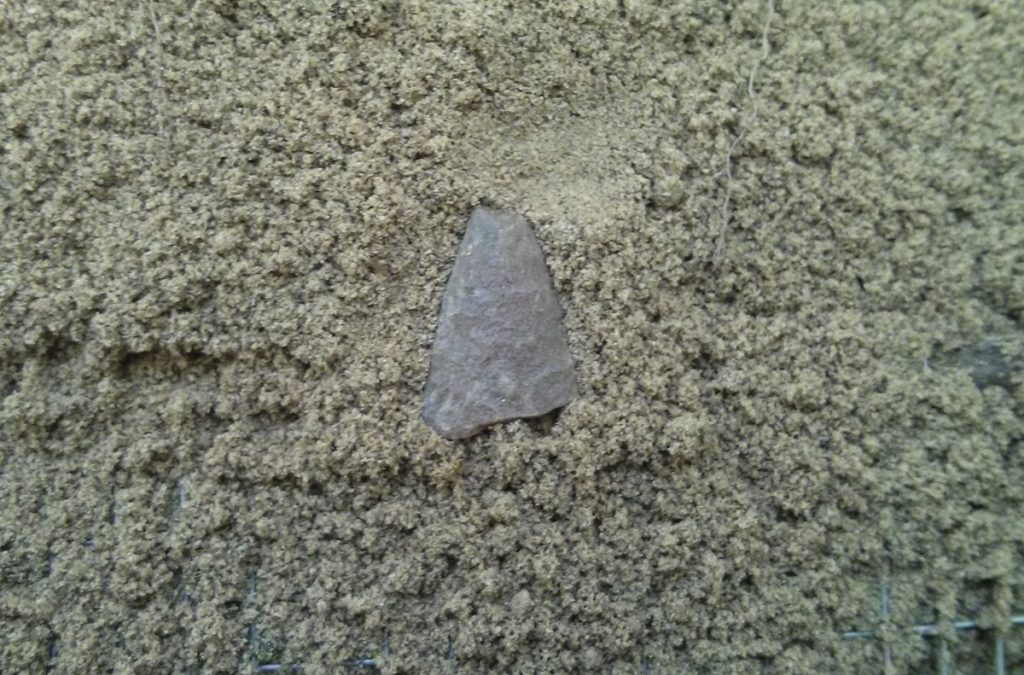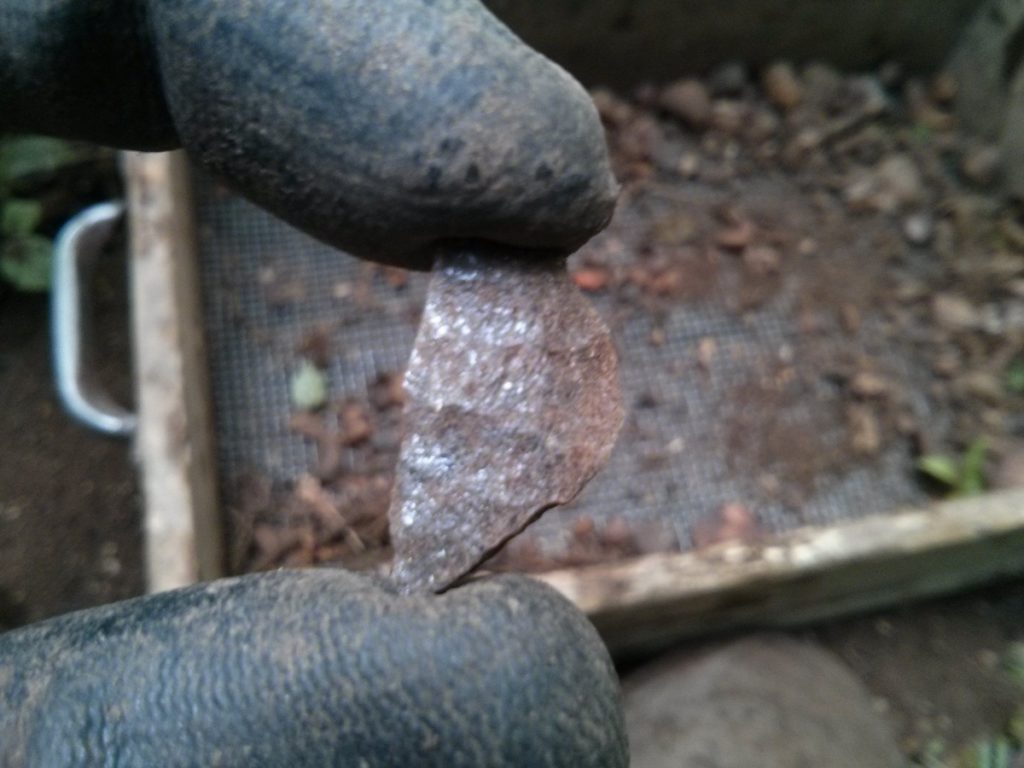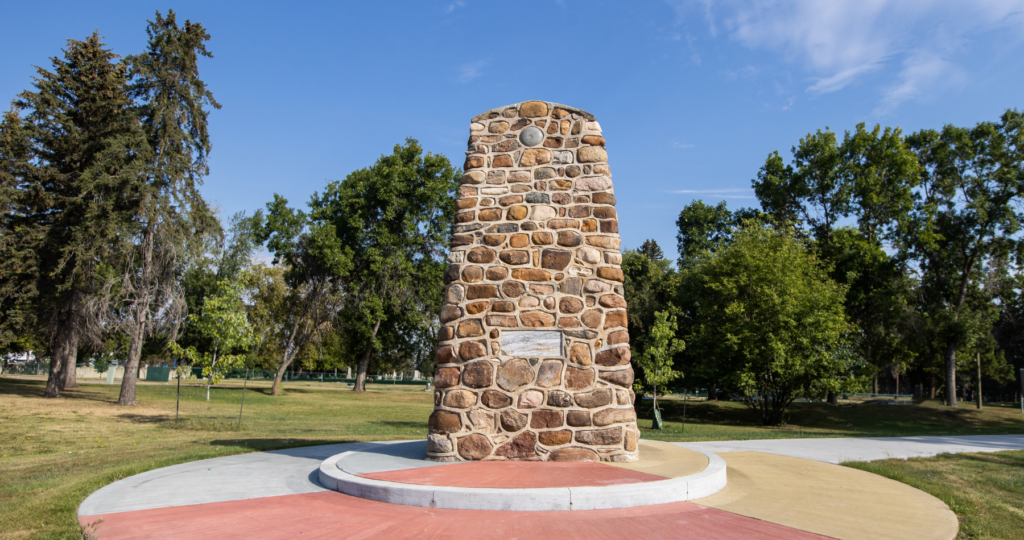Post Category : Archaeonerdism Local Archaeology
Archaeology of the Marten Creek valley
Last year (2015) archaeologists from Tree Time Services conducted surveys of a number of areas on the Marten Creek valley, from near the mouth of the creek at Lesser Slave Lake to the headwaters at Marten Lakes. These surveys were done in advance of forestry operations by Alberta Plywood and Tolko Industries Slave Lake mill. We found several clusters of precontact archaeological sites that show the Marten Creek valley has been occupied and traveled through for thousands of years.

Near the mouth of the creek, we surveyed areas on the north and south sides of the valley for Tolko. A little survey had been done in this area before, for a pipeline that crossed the creek valley just east of Highway 88. This survey found two small scatters of stone flakes on south facing terraces over the creek. We flagged those sites for avoidance, and we found several other small sites. At two of these sites (GjPr-8 and 10), we found small, side-notched points. If you found these, you’d probably call them arrowheads, but based on the size, they were probably attached to a shaft bigger than an arrow, for a javelin-like small spear. We call these spears ‘darts’. They were thrown with a throwing stick called an atlatl, that gave them a lot more range and force than a spear thrown by hand. We know that atlatls were used in Alberta from about 8000 years ago up to 1300 years ago. These points are similar to Besant or Bracken style points that date to the end of this period, from about 3500 to 1350 years ago.

Further upstream, on the north side of Marten Lakes, we found several small sites and a couple much more extensive campsites. We didn’t find any diagnostic tools, like projectile points, that would give us a time of occupation, but we did find some other tools and cores that give a sense of what people were doing here. A lot of the debitage, or flakes and chips from making tools, are from the early to middle stages in the tool making process and are of quartzite, which is present in the local glacial gravel. This tells us that one of the things people were doing in the valley was making tools from local stone. The local quartzites are fairly coarse-grained, and very strong. They’re good for making things like stone choppers, hide scrapers,and expedient (quick, disposable) knives, and we have found a couple tools like this in the area. We also found some cores and flakes of materials other than quartzite. These include a fine grained siltstone core and a flake of chalcedony or silicified peat, which is a material similar to flint. These were probably brought here from elsewhere because people knew it would be difficult to find nice fine-grained stone here to make smaller, sharper tools with.
The biggest site on Marten Lakes (GjPp-4) had multiple components, identifiable occupations from different time periods. There were stone flakes buried about 20 cm down; some stone flakes and moose bone fragments about 5 cm down, below the moss and duff; a pit feature, cans and moose bone in the duff, and an ATV trail and bullet casings on the surface. We didn’t do enough excavation to get specific dates for the occupations, but our preliminary interpretation is that we have a precontact occupation of unknown age, maybe another more recent precontact / protohistoric (fur trade era) occupation, an early 20th century occupation (maybe a trapping cabin), and recent traditional or recreational use.
There’s another, very interesting historic site at Marten Lakes, an old ranger cabin with a marked grave. We revisited this to make sure that it wouldn’t be disturbed by the forestry operations, and to update the government on it’s status since it was last reported in 2007.

All of these sites tell us that that the Marten Creek valley has been occupied and traveled through for at least 2000 years, and probably a lot longer. We didn’t do enough digging to interpret any of these sites in detail, but based on the types of tools we found: points, scrapers and expedient knives; moose hunting was probably a major activity here. Marten Lakes might also have had a very productive spawning season fishery. The Marten Creek valley and Willow River valley also form a natural travel corridor through the muskeggy country from Lesser Slave Lake to Wabasca, and this probably also played a role in its occupation during the precontact and historic periods.



